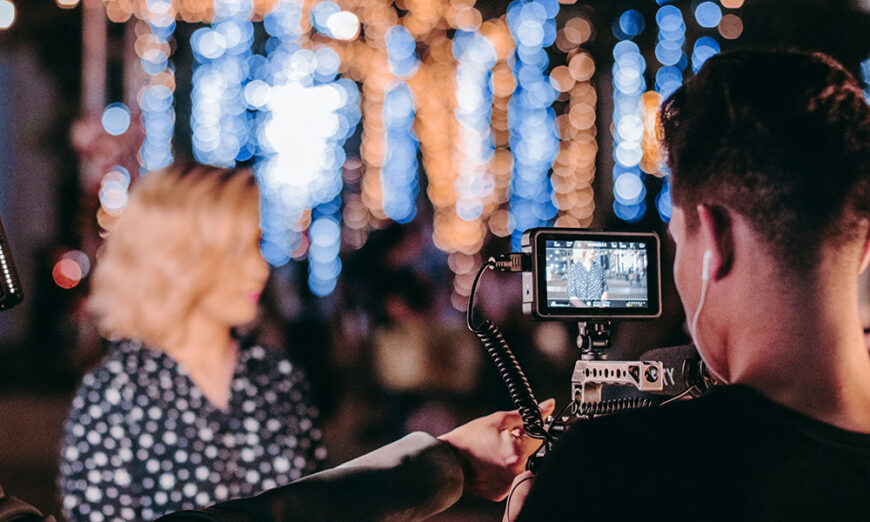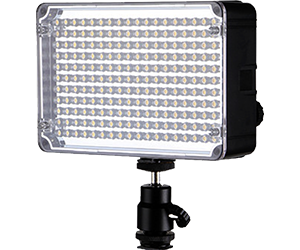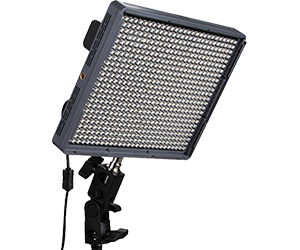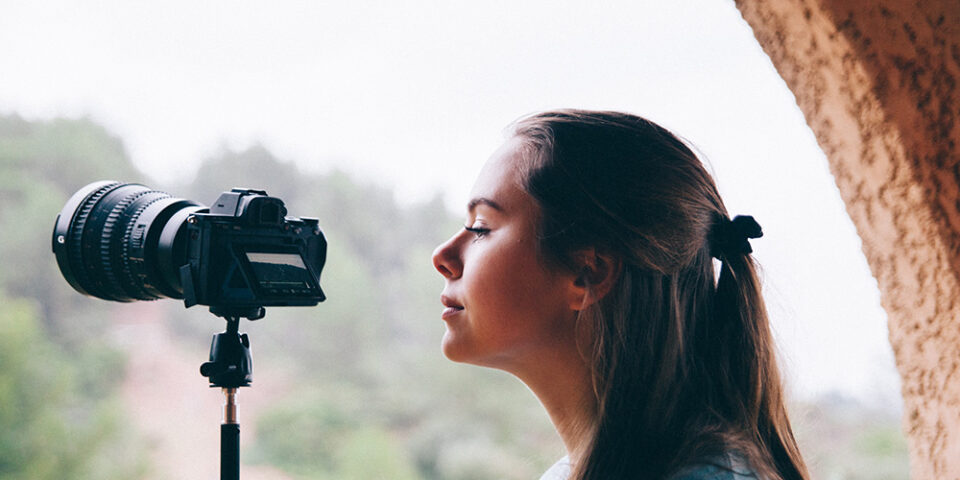As I work with people embracing video in their still cameras, eventually we come to some footage that would be awesome except for one or two serious issues. I will tackle both, but in this article we’ll talk about the first one, and that is light.
It’s often said that nothing destroys good video as fast as bad audio, and while true, muddy video with poor dynamic range and lousy colour fidelity is mostly unwatchable and therefore unwatched.
Our cameras can do amazing work in low light, and emerging videographers can quickly learn the steps to at least give themselves a fighting chance. At some point however, ambient light just won’t do the job. I’m not speaking solely of cinematic efforts, even the home DIY, or hobby related video will benefit from better lighting. Looking at YouTube or Vimeo, I find thousands of amateur videos, all built with great intent and flair that could be better by just adding some lighting.
Let’s do that. And we will do it keeping in mind that real folks have other expenses and we all want to get the most we can for the most effective investment. Of course we all strive to make professional videos or, at least, professional-looking videos, whether you’re a vlogger/tutorial-style content creator or representing your business on YouTube, your company website, etc… but, for all of us doing amateur or semi-professional video, the issue of inadequate lighting is best addressed with LED based lighting.
On-Camera Lights
In the old days of movies and video tape, the on-camera light was a popular and ready choice. Things are better today. LEDs run cooler, weigh less and push a lot of light for relatively low cost. You also aren’t tied to an AC outlet or gifted with upwards of thirty pounds of batteries around your waist, rapidly placing your lower back and hips in need of traction. An on camera light has a real “day in the life” look and feel. If you’ve ever seen a crew doing ENG (electronic news gathering) you’ve seen this. A person with a camera on their shoulder, light on top, with a reporter holding a microphone engaging the subject. LED lighting is much easier on the subject and produces a very pleasant light, and while bright, doesn’t get hot preventing discomfort on the part of the videographer and the talent.
There are many options in on camera lights. The primary thing to remember is that the light is on camera. A small camera with a 12″ diagonal LED panel is quite ungainly and a strong breeze turns the panel into a sail. Smart buyers looking to work on camera, will choose a smaller light.
There are many manufacturers delivering solutions in this space including Lumahawk, Litepanel, F&V, Manfrotto and many others. For folks starting out, where video is still purely a hobby pastime, I suggest looking at the Aputure Amaran AL-H198C. The unit comes with a foot to mount in the camera hotshoe, a small ball head and weights only 325 grams. Lightweight in a camera mount light is critically important.
This light uses LEDs with a CRI (colour rendering index) of 95% which is excellent and delivers a 5500K daylight white balance. The unit can run on 6 AA batteries or one of the various sizes of Sony F series batteries. I strongly advocate using the F series purely for overall cost control and of course runtime. A unit like this draws about 20 watts and consumes about 2.3 amperes, so the more power on tap, the happier you are.
What I like about this light is that it is affordable and pushes 920 LUX at 1m. A word of caution on LUX ratings, they mean nothing without an accompanying distance marker. I have seen this light written up as 3400 LUX but with no distance measurement and that references the brightness right at the lens, a fairly useless measurement. 920 LUX at one meter is very bright and well suited to the kind of work we are talking about. The 198 LEDs in the light produce a sixty degree wide beam, very well suited to this type of work with decent spread but not a lot of light being wasted trying to light to wide an area. As this is an LED based lamp, the output is continuously variable via a control on the rear of the lamp. It’s small, will fit in most bags and produces a good amount of light for a reasonable time when you add an F mount battery.
Off-Camera Lights
We go to off-camera lights when we have space, and the need to light a wider and taller space. This could be as simple as a setup for a YouTube video in your rec room or sewing room, or could also be a two or three up Wayne’s World style of streaming content.
What we look for here is the combination of spread, power, and colour temperature control. In this type of setup, we may have to work with other existing ambient light and so I advocate LED panels with variable colour temperatures in this case. Battery power is a nice to have, but these videos tend to be of longer form and AC power is usually preferable (should you ever find that your shooting space no longer has enough outlets for your equipment, you can call out a professional electrician, like the team at SALT Light & Electric, to install additional outlets in the room). These lights will typically be mounted on a tilt/swivel adapter and then be mounted on a light stand. In many cases the adapter will be included, others will have it as an accessory. In general, light stands are purchased separately. Don’t skimp here, you can get very good light stands with air cushioning in the $75 range.
As in on-camera lights, there are many options, but in keeping with my budgetary constrained model, I’m going to suggest the Aputure Amaran HR672C LED lamp. It comes in a small travel bag with the tilt/swivel, AC adapter, an F mount battery and diffusion filter.
The panel contains 672 LEDs with a 100,000 hour expected lifetime. These are CRI 95 LEDs and are both fully dimmable and have a variable colour temperature from 3200K to 5500K, meaning tungsten to daylight in a single fixture. The tilt / swivel adapter mounts to a standard 5/8 light stand stud. Like all Aputure Amaran fixtures, the bezel is very narrow and you can clip multiple panels together when you need more light. If you are lighting a larger set, this is a significant advantage because the mount is rated for more than the 585 grams a single panel weighs. You could mount one and clip others to each side and the top for a four panel system on a single light stand. I would of course always recommend sandbagging light stands to prevent accidents.
The Aputure Amaran HR672C light is incredibly inexpensive for a variable power, variable colour temperature lamp. The lamp is rated for 1920 LUX at 1m, so has a good amount of power at hand. There is also a 2.4GHz radio remote to allow you to adjust the power when the light is positioned out of reach. This price point would allow adding two to three units to your lighting kit for the same investment as a single fixture from another vendor with the same capabilities.
Both the Aputure Amaran units are built in a plastic housing. If you think that your video lighting work is going to be in more hostile environments or that the units will be beaten up in transit, you may wish to consider a metal housed alternative. Know that this will increase the cost and the weight.
Improving your videos is not hard, nor outlandishly expensive when you buy carefully and use lights appropriate to your task. While your camera may do a great job with ambient light, to take your videos to the next level, lighting is critical and a bit of investment, learning and practice will go a long way.
Easy Self-lighting Recipes for Your Videos
In this episode of Calling the Shot, Gajan shows us some simple and easy-to-create lighting setups! Gajan walks us through different ways to capture a scene using 1-, 2- and 3-light setups. Have a look and let us know what you think in the comments below.





COMMENT (1)
Pingback: How To Shoot Video | Photography and video news, reviews and tips | Henry's Camera